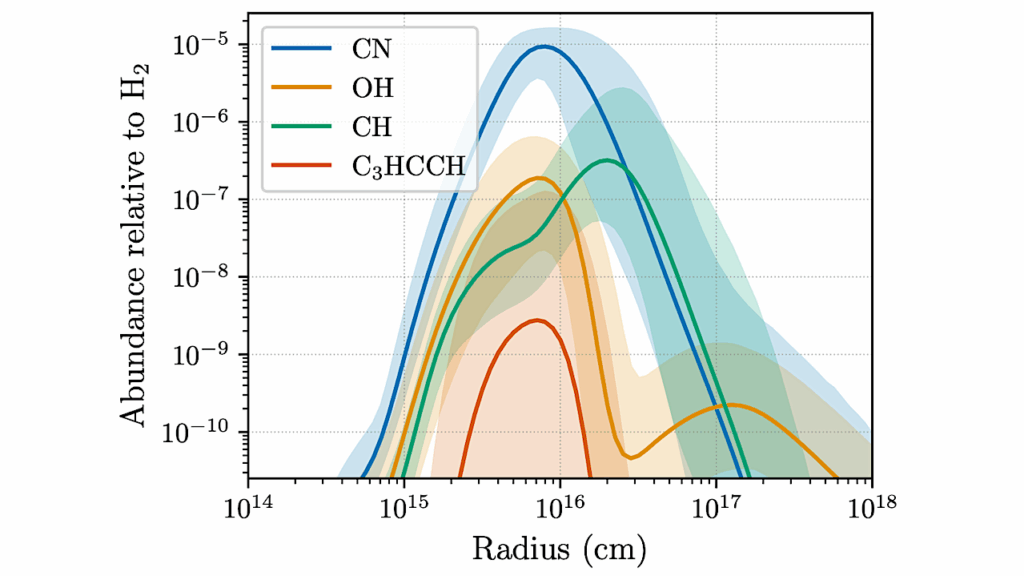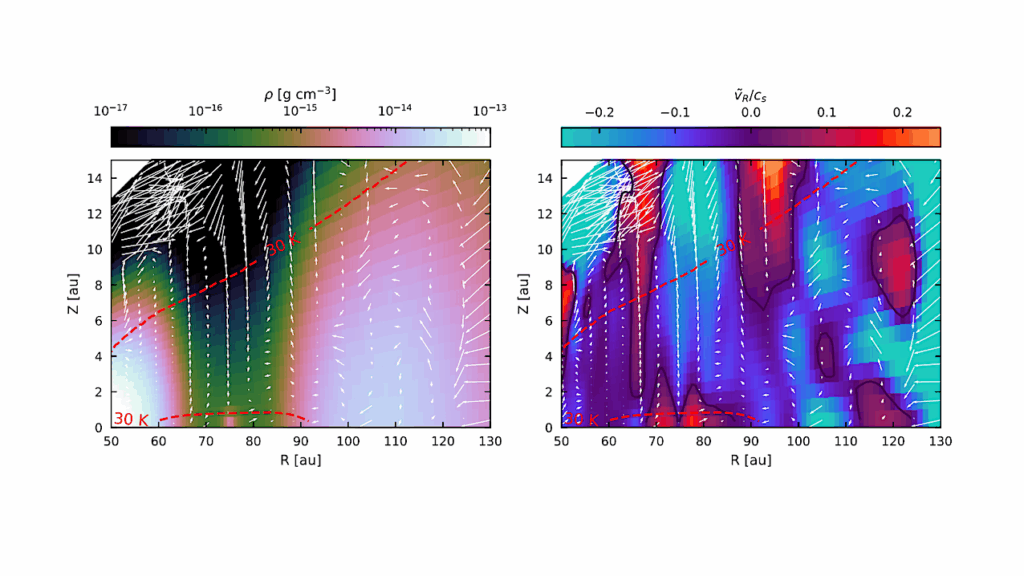Prebiotic Chemistry Insights for Dragonfly: Thermodynamics of Amino Acid Synthesis in Selk Crater on Titan

Saturnian moon Titan presents a compelling testbed for probing prebiotic chemistry beyond early Earth. Impact-generated melt pools provide transient aqueous habitats in an otherwise cryogenic environment.
We use Cantera equilibrium models to assess whether mixtures of hydrogen cyanide (HCN), acetylene (C2H2), and ammonia (NH3) can drive amino acid synthesis in Selk-sized craters. Across twenty-one amino acids (twenty proteinogenic plus beta-alanine), NH3-free systems yield only proline, alanine, and beta-alanine, whereas adding as little as 1% NH3 (relative to H2O) renders almost the full suite accessible, with yields peaking at 2% and tapering thereafter.
The NH3-free alanine result implies alternative pathways beyond classical Strecker or aminonitrile hydrolysis, suggesting acetylene, abundant on Titan but scarce on early Earth, as a plausible feedstock. We identify acrylonitrile (detected on Titan) as a thermodynamically favorable intermediate that can convert to alanine under aqueous conditions in an NH3-free pathway.
For glycine and alanine production from nitrile hydrolysis, comparison with laboratory kinetics shows that our equilibrium models predict near-complete conversion, while observed rates yield only partial products over weeks. Yet estimated chemical equilibration times (years-centuries) are far shorter than melt lifetimes, supporting plausibility of equilibrium in situ.
These predictions are directly testable with Dragonfly mass spectrometer (DraMS), for which we recommend pre-flight standards to test proline, alanine, beta-alanine, cysteine, and methionine. The first three offer the best chances for amino acid detection regardless of ammonia availability; the latter two offer diagnostic tools for determining the presence of reactive sulfur in post-impact Titan ponds.
Ishaan Madan, Ben K.D. Pearce
Comments: Note that there is an appendix after the references of the main manuscript
Subjects: Earth and Planetary Astrophysics (astro-ph.EP); Chemical Physics (physics.chem-ph); Biomolecules (q-bio.BM)
Cite as: arXiv:2511.09636 [astro-ph.EP] (or arXiv:2511.09636v1 [astro-ph.EP] for this version)
https://doi.org/10.48550/arXiv.2511.09636
Focus to learn more
Related DOI:
https://doi.org/10.3847/PSJ/ae1c18
Focus to learn more
Submission history
From: Ishaan Madan
[v1] Wed, 12 Nov 2025 19:00:04 UTC (1,188 KB)
https://arxiv.org/abs/2511.09636
Astrobiology,








